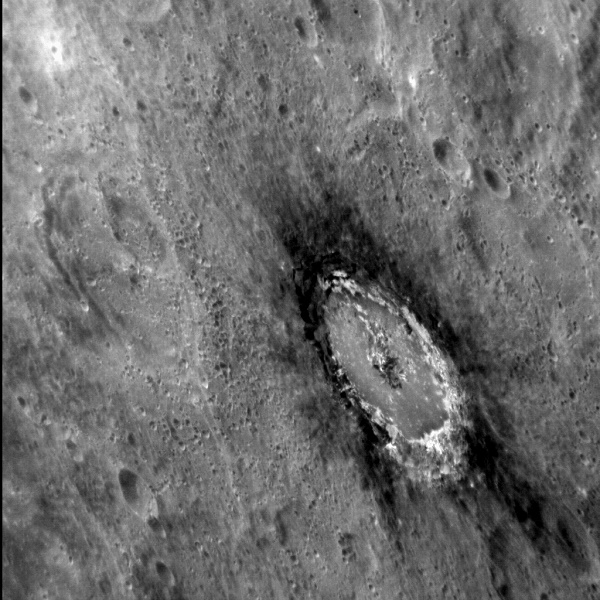By Ana Verayo, | March 08, 2016

The halo is composed of “Low Reflectance Material,” which was excavated from depth when the crater was formed.
NASA's Mercury probe known as MESSENGER crashed onto the surface of the closest planet to the Sun when it ended its successful mission last year.
During its final orbiting phase, MESSENGER confirmed that the extremely dark, sooty surface of Mercury was indeed made from carbon, but in a surprising turn of events, researchers now suspect that this was not caused by comets and asteroids passing by the tiny planet.
Like Us on Facebook
In this new study, scientists believe that they are now observing for the first time ever, Mercury's primordial crust that has been formed from magma that cooled down from intense heat, as minerals began solidifying.
Using computer simulations and experiments, the team reveals that most of these minerals that became crystal in form, sinked below the surface however, only one mineral floated and remained on top of the surface, graphite.
Using the scientific suite of instruments onboard the MESSENGER known as the neutron spectrometer, the probe acquired some low altitude measurements from the darkest regions of Mercury's surface that possessed the lowest reflectance material.
According to MESSENEGER lead mission scientist, Sean Solomon of Columbia University, these measurements show that there are enhanced fluxed of thermal neutrons over these darkest regions where graphite becomes the only darkening agent that confirms this spectral reflecting properties from observations and neutron measurements.
This graphite is carbon rich as well that are also found in large impact craters, which is also evidence of this material originating from the deep layers of Mercury's crust when it became exposed from an asteroid or meteor impact.
Solomon adds that these deposits are also linked to material that was excavated from large impact craters from the middle to the lower crust. Scientists estimated that this ancient crust measures almost one kilometer in thickness. Today, the crust of Mercury has been bombarded and pockmarked with impacts when the surface was covered in lava, melting into these impacts.
According to physicist Patrick Peplowski of the Johns Hopkins University Applied Physics Lab, these processes diluted all traces of any primordial crust. Also, this new finding reveals that Mercury's evolution involves a higher concentration of carbon as opposed to all the inner planets of the solar system.
Solomon adds that Mercury formed within the part of the early solar nebula that made it possible to produce chemicals like sulfur, sodium, potassium and chlorine compared to Venus, Earth and Mars. This new study is published in the journal, Nature Geoscience.
-
Use of Coronavirus Pandemic Drones Raises Privacy Concerns: Drones Spread Fear, Local Officials Say

-
Coronavirus Hampers The Delivery Of Lockheed Martin F-35 Stealth Fighters For 2020

-
Instagram Speeds Up Plans to Add Account Memorialization Feature Due to COVID-19 Deaths

-
NASA: Perseverance Plans to Bring 'Mars Rock' to Earth in 2031

-
600 Dead And 3,000 In The Hospital as Iranians Believed Drinking High-Concentrations of Alcohol Can Cure The Coronavirus

-
600 Dead And 3,000 In The Hospital as Iranians Believed Drinking High-Concentrations of Alcohol Can Cure The Coronavirus

-
COVID-19: Doctors, Nurses Use Virtual Reality to Learn New Skills in Treating Coronavirus Patients







